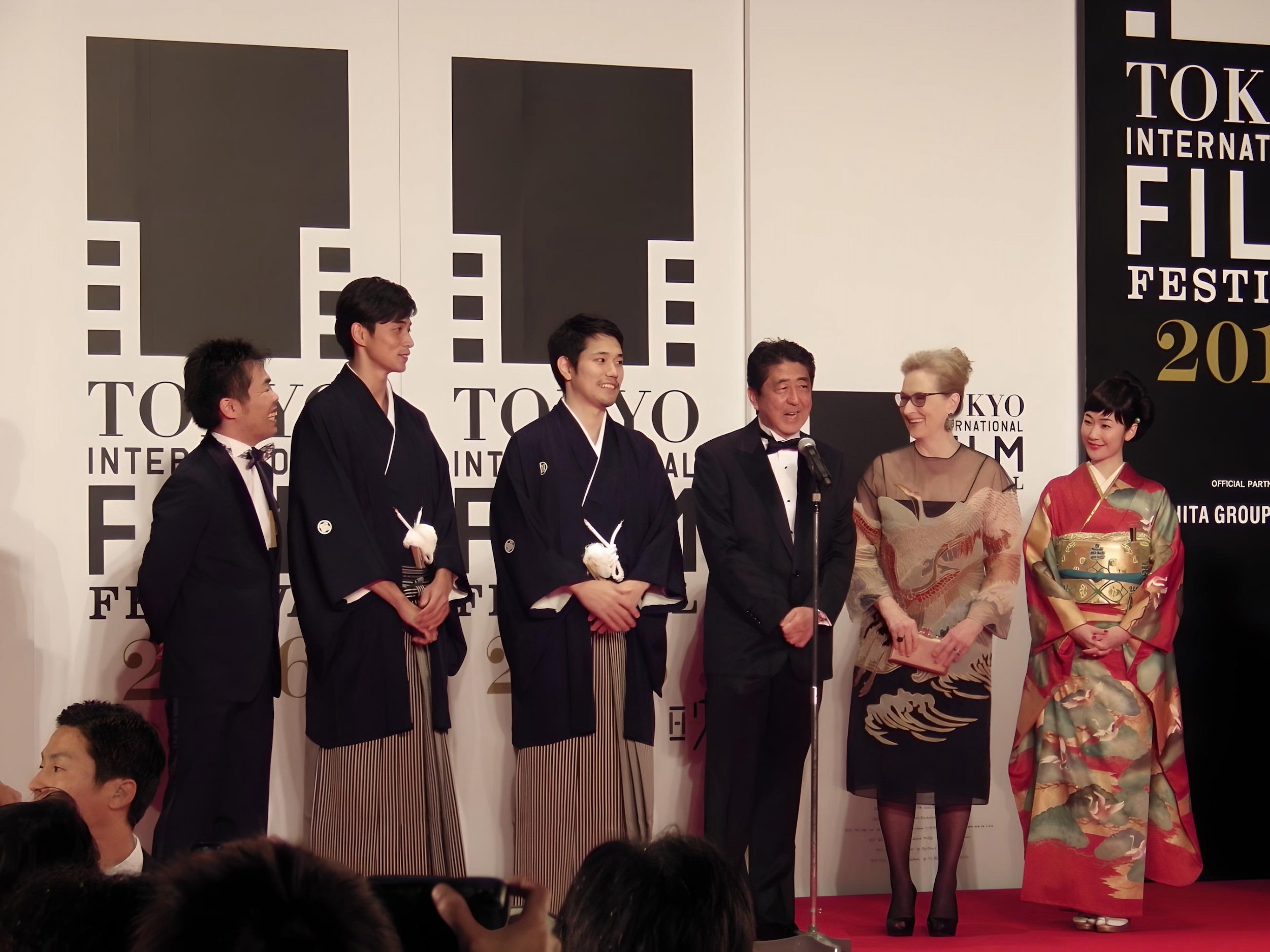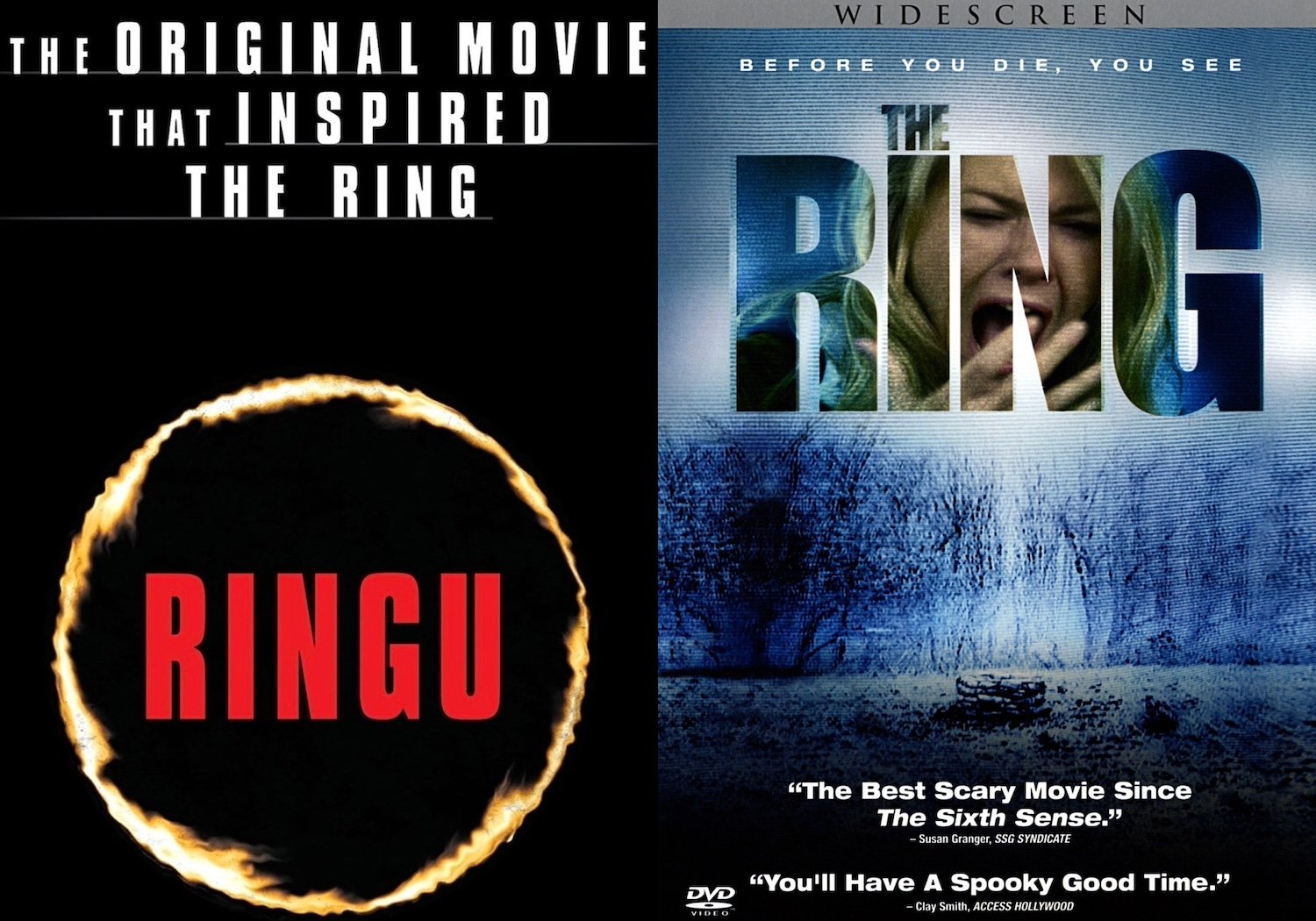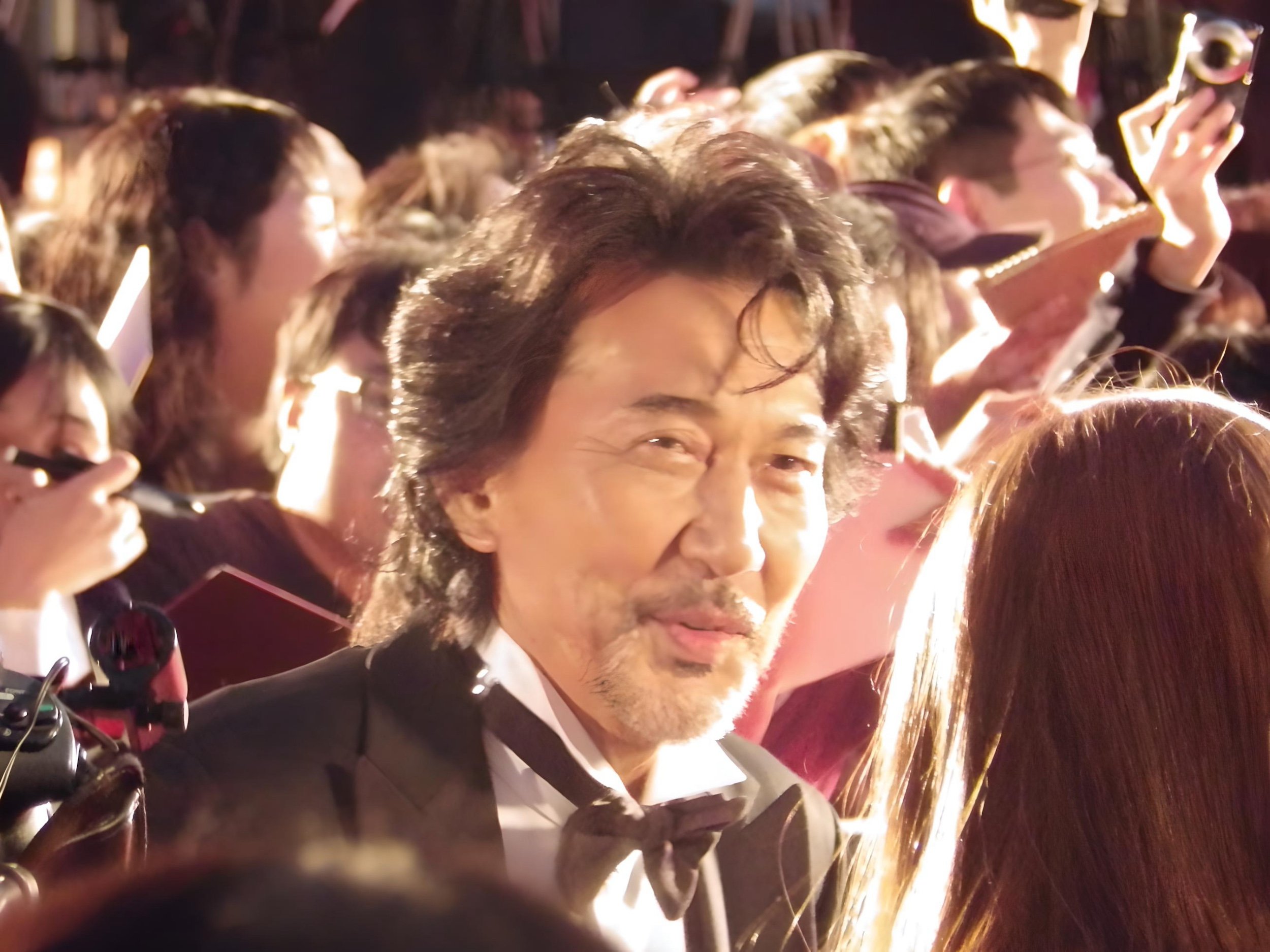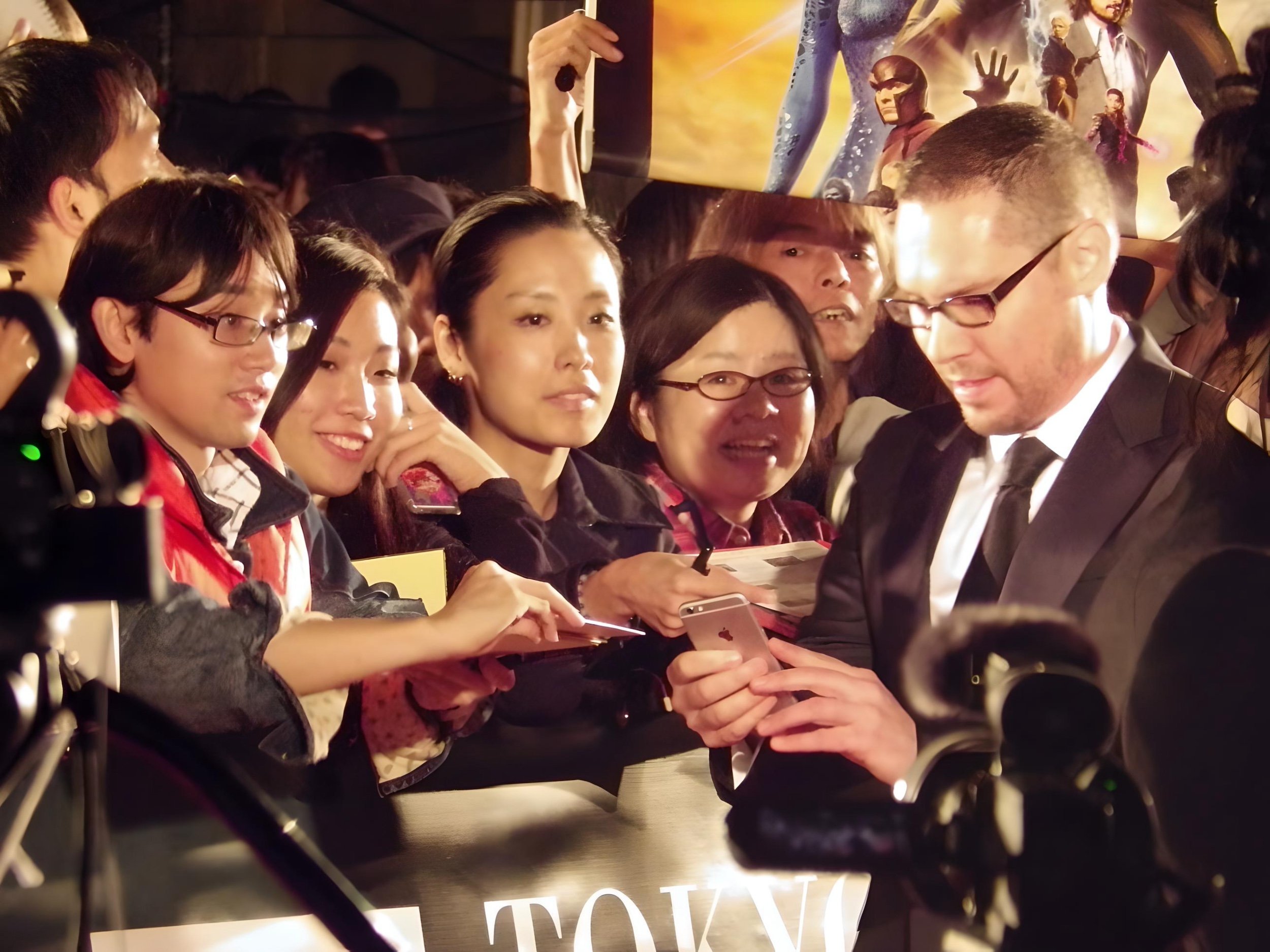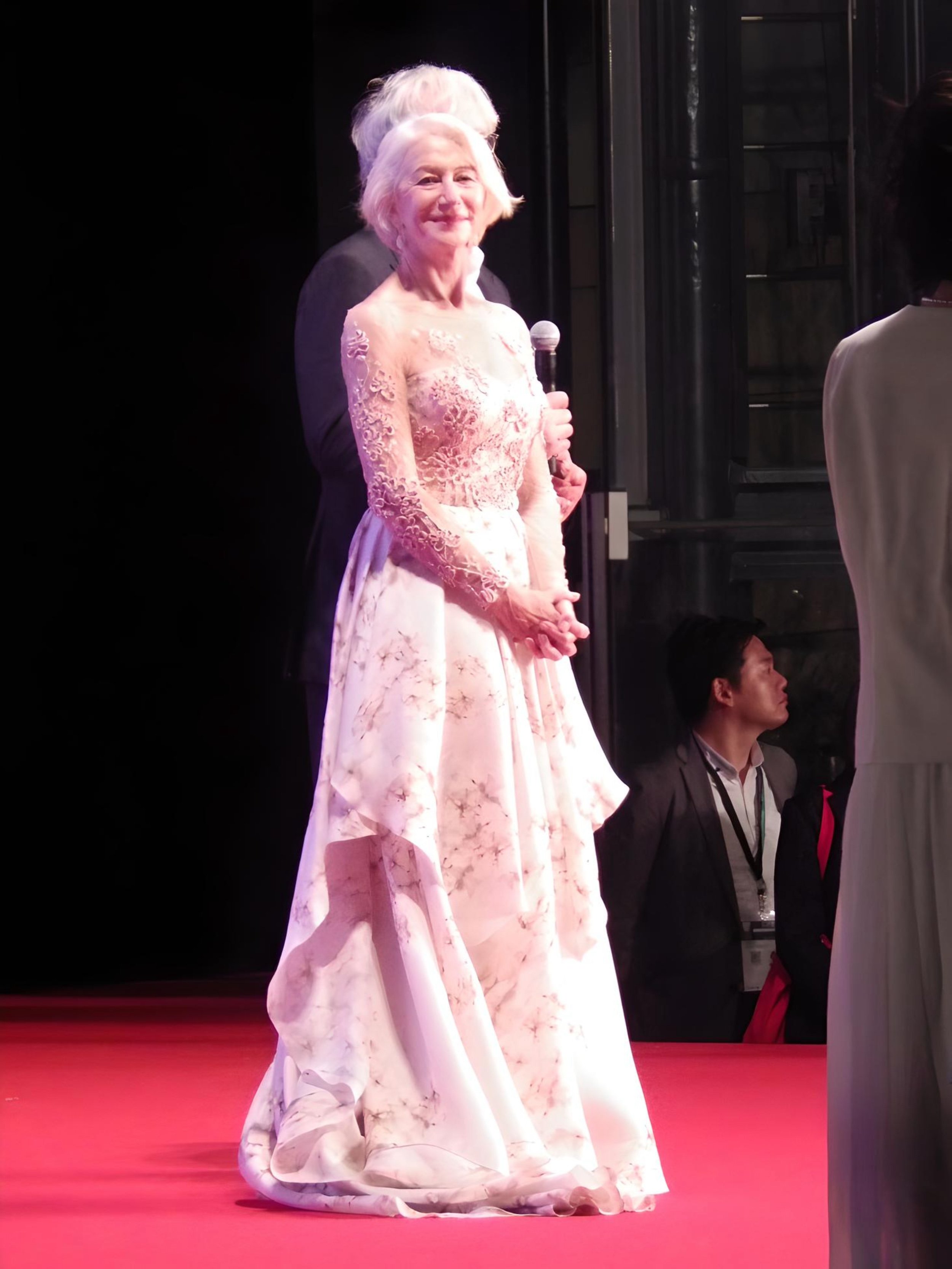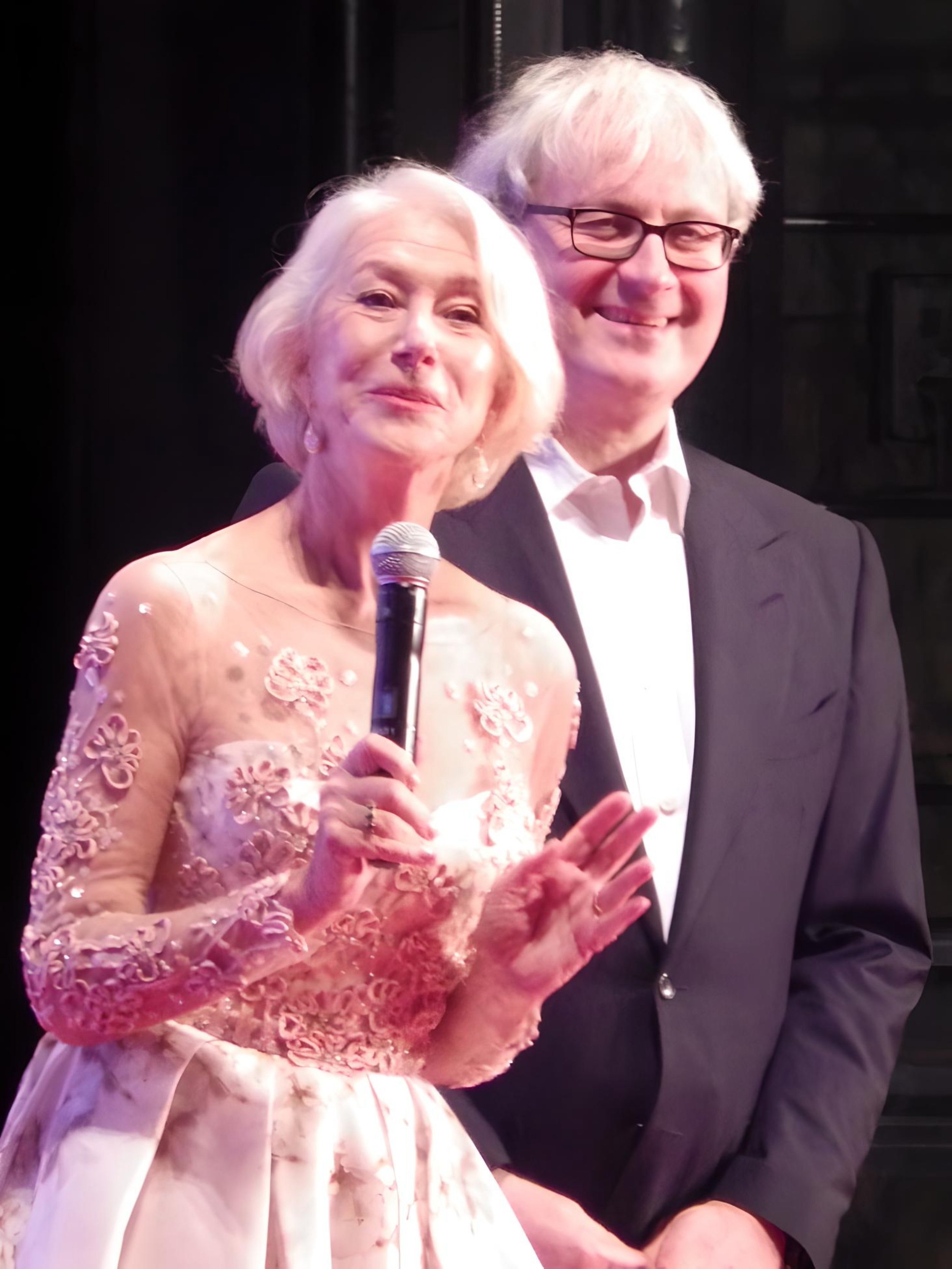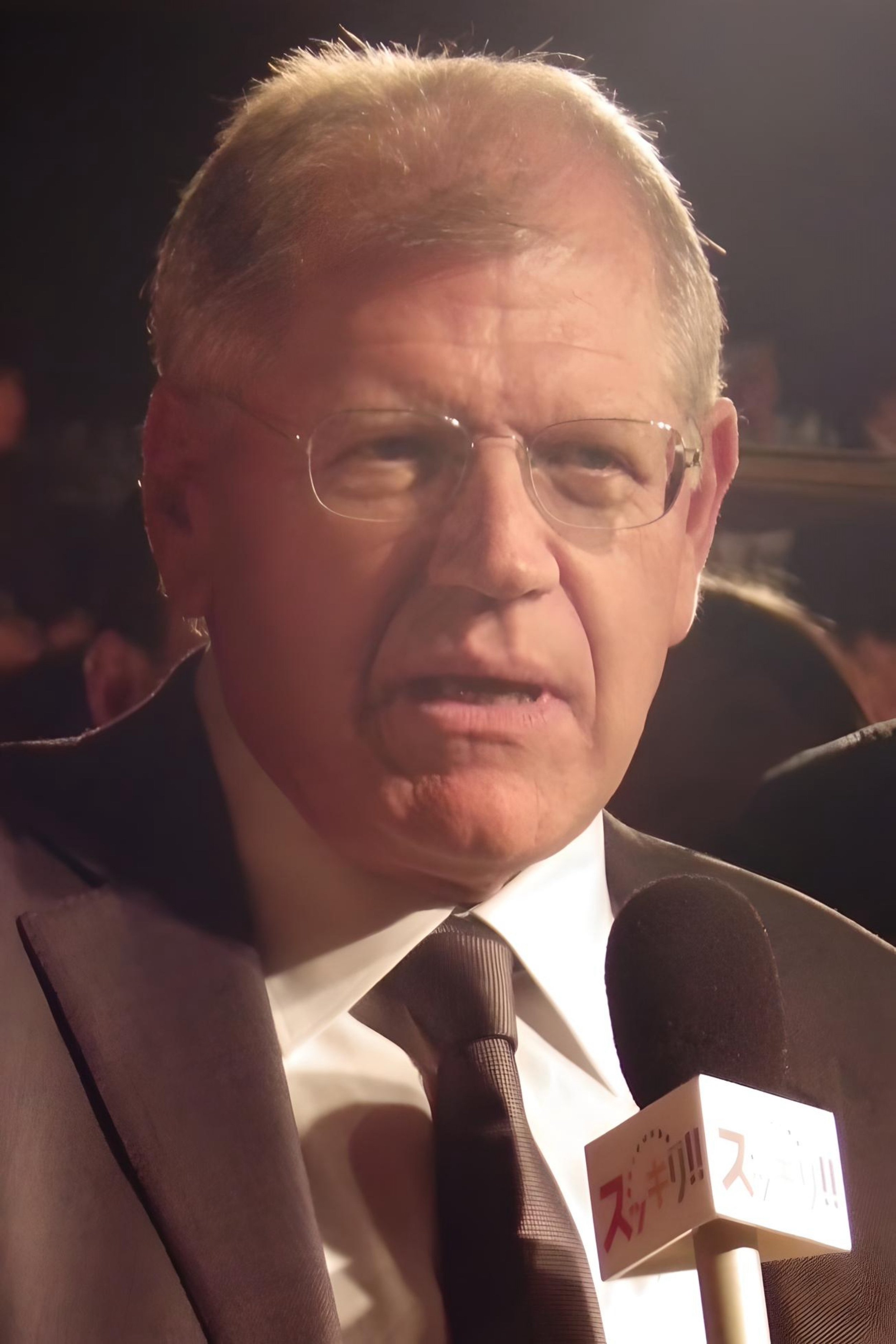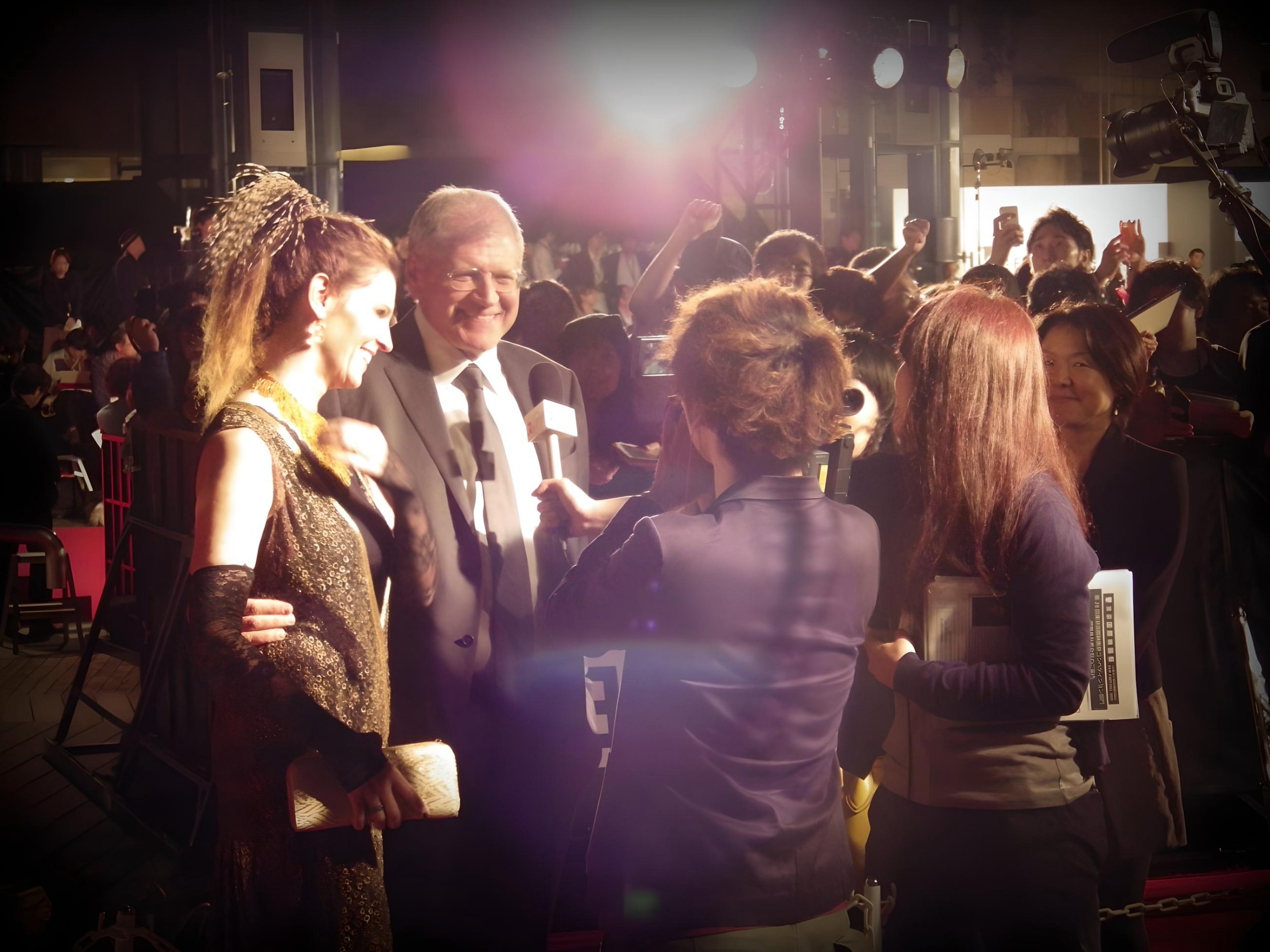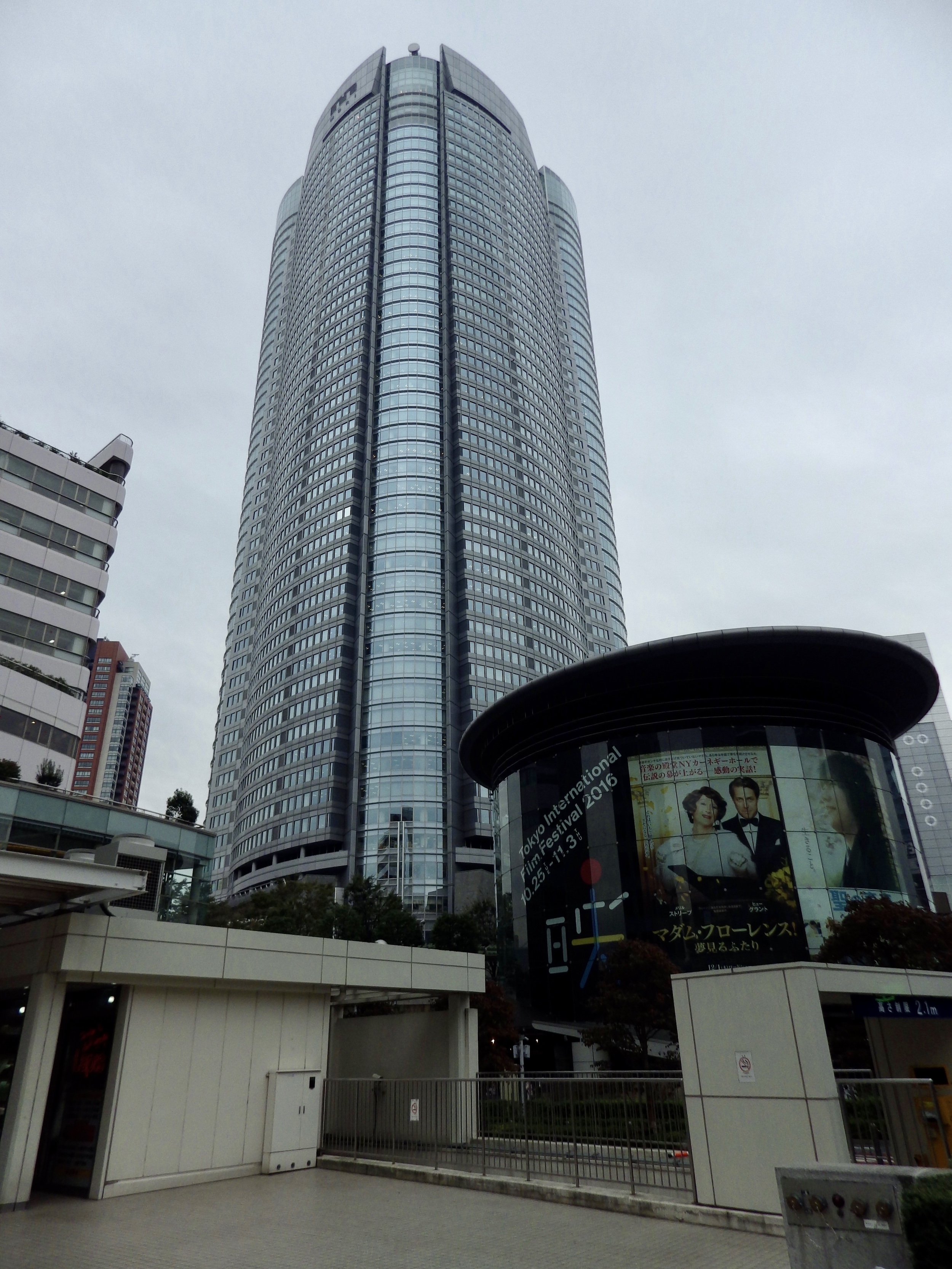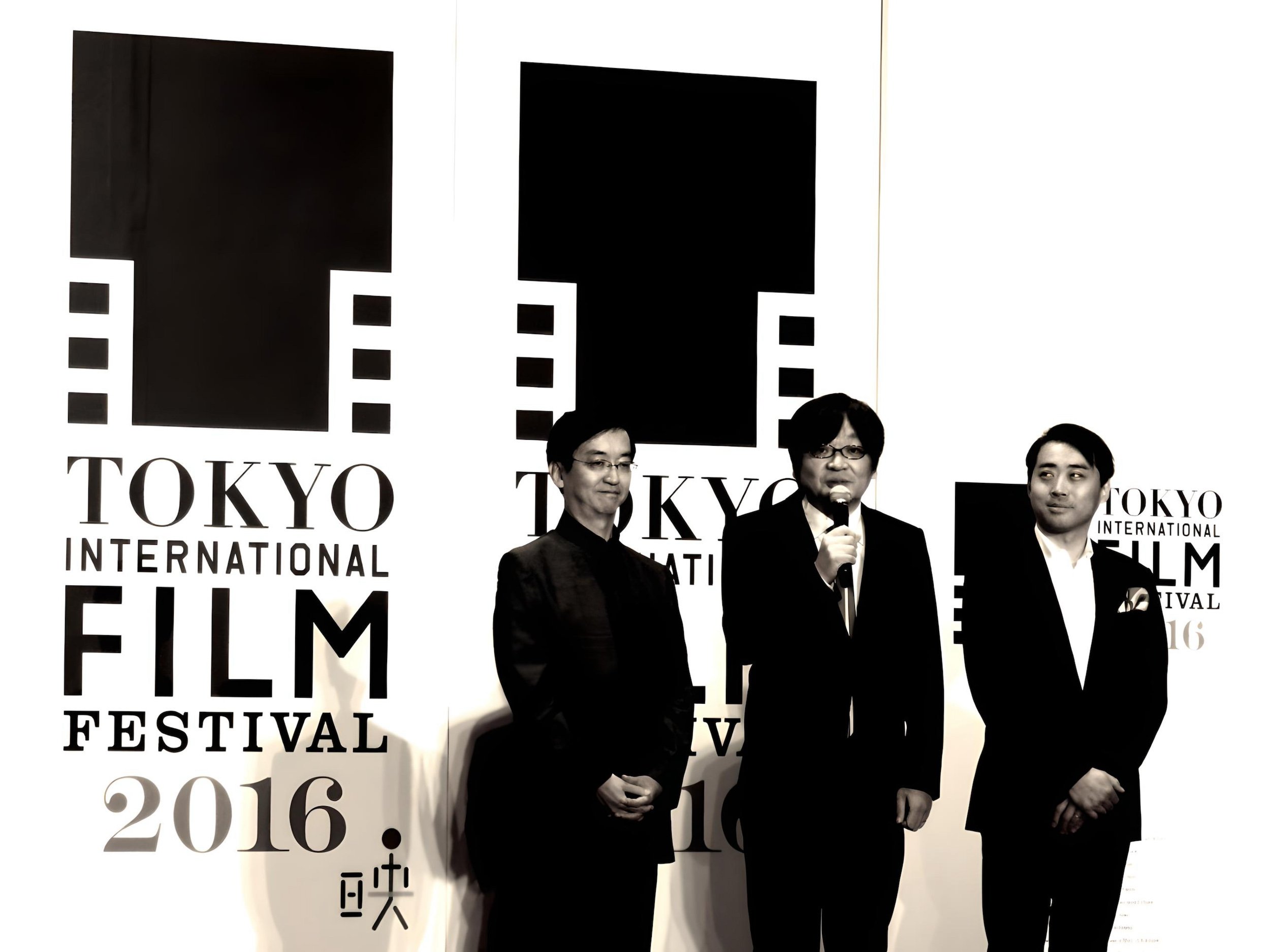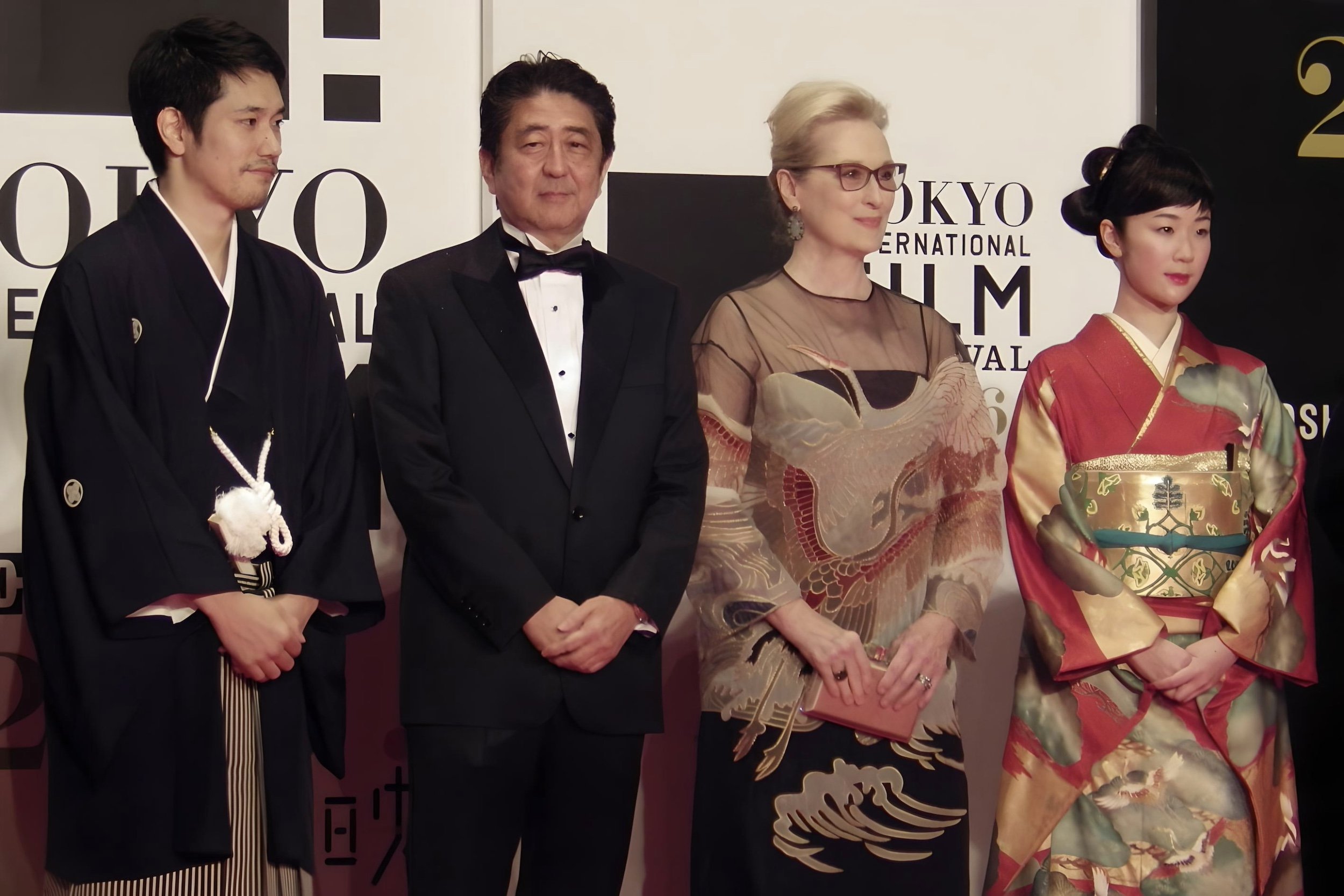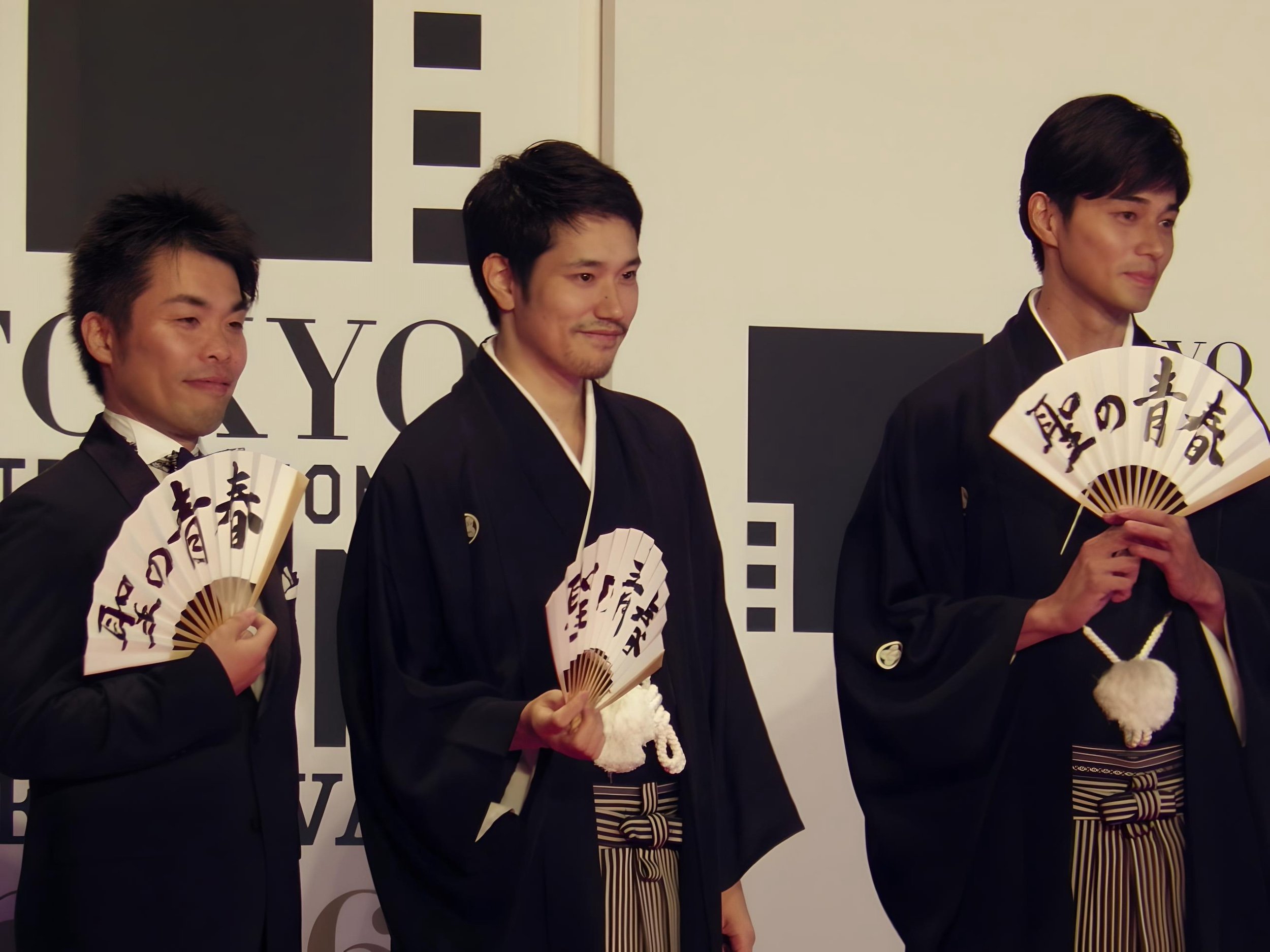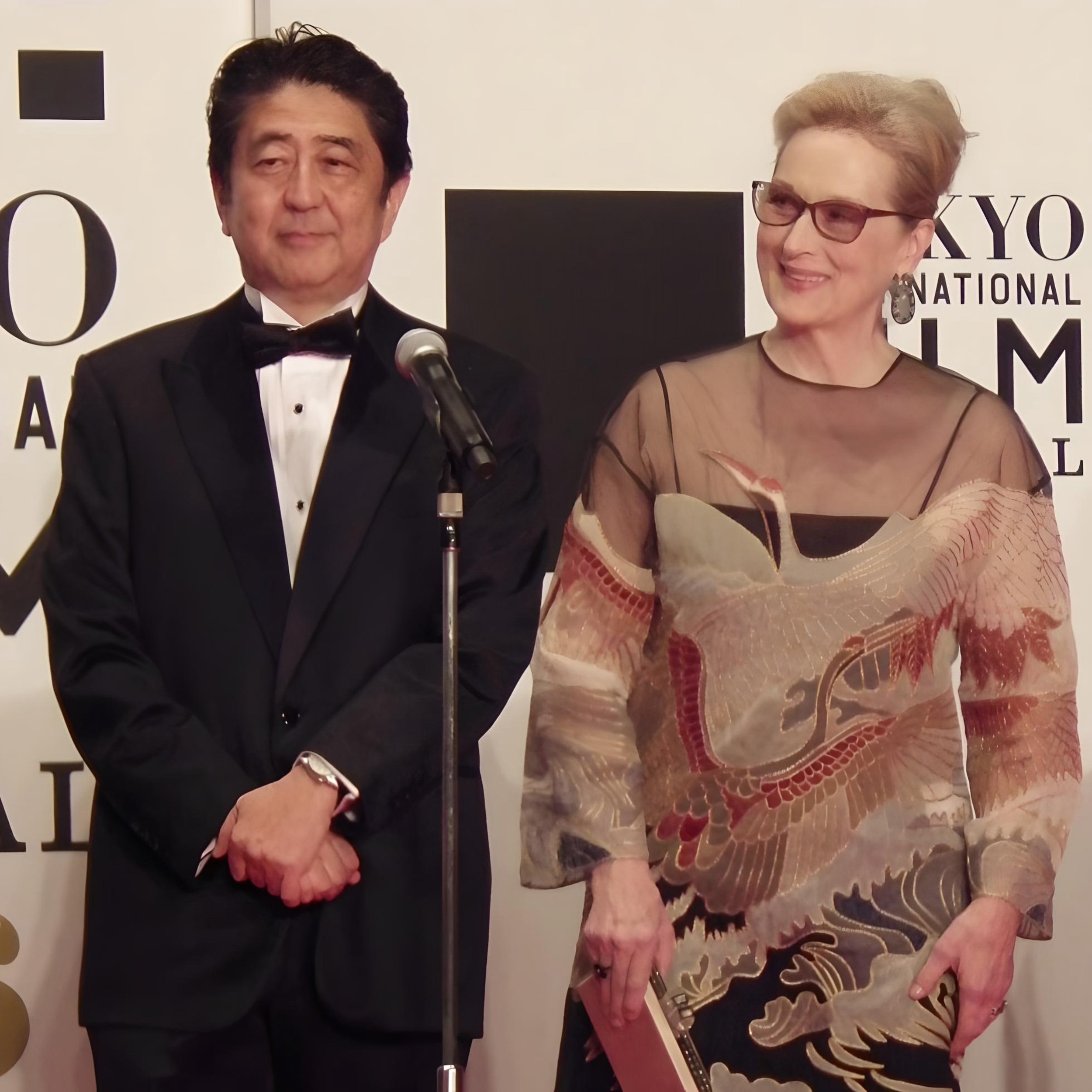Every year in late October, the Tokyo International Film Festival (TIFF-JP) kicks off in the Roppongi Hills complex, located in the affluent ward of Minato. 2015 and 2016 were no different; the 45 images in this post relate to those years, when globally renowned actors and directors like Koji Yakusho, Helen Mirren, Robert Zemeckis, and Meryl Streep made appearances. The focus here is the festival’s opening day, where you’ll see what it’s like to attend a screening, and then engage in a bit of people-watching from the public viewing area during the red carpet ceremony.
Roppongi Hills is a short walk from Roppongi Station, on the Oedo and Hibiya subway lines. Each year, the Metro Hat for the Hibiya Line is done up with large-scale advertising for the film festival.
Inside the complex, you’ll pass the landmark sculpture of Maman the spider, seen here in a file photo from our Roppongi Hills gallery.
Next to the Mori Art Museum Cone, you’ll come upon the entrance to Toho Cinemas Roppongi.
Here, you can see the glass Museum Cone, with skyscrapers under construction in the distance.
Looking down on Roppongi Hills Arena, as the red carpet is being set up …
Toho Cinemas Roppongi is also housed within a striking glass edifice.
To enter the theater, you’ll need to present a QR code on your phone. It doesn’t leave much room for collecting ticket stubs, so let this poster of The Walk, directed by Robert Zemeckis, serve as a digital souvenir of the festival’s opening film in 2015.
Inside the theater, waiting for the first screening of The Walk to begin …
Two hours later, the lookout spot next to the stairs and escalator — where we snapped that pic of the arena before — has been closed off by security. If you were there, you’d hear sound booming up from the arena now, too.
For some reason, in 2015, the opening film was scheduled to overlap with the opening ceremony. By the time the first screening let out, the red carpet event had already started down in the arena.
The first famous face to pop up on our tour of recent TIFF-JP history is Hilary Swank, two-time winner of the Academy Award for Best Actress for her performances in Boys Don't Cry and Million Dollar Baby.
Outside the arena, fans gather behind members of the press, just to catch a glimpse of heads moving down the red carpet.
One such head, seen bobbing along here, is that of Japanese director Hideo Nakata, best known for Ring (a.k.a. Ringu) and Dark Water, two seminal fright flicks based on Koji Suzuki stories.
In the 2000s, a glut of American remakes helped recapitulate the “dead wet girl” trope from this pair of J-horror classics. First out of the gate (and perhaps the sole fresh tomato in the batch) was The Ring, a slick, Hollywoodized remake of Ringu.
Depending on which film nerd you ask, the remake might actually rank as superior to the original in this case. Certainly, it was more of a worldwide box-office phenomenon. Who could forget that immortal tagline? “Before you die, you see … The Ring.”
For its part, Ringu was one of those titles that jumped out from the shelf at video rental stores, attracting the attention of more serious cinephiles, who were not averse to watching a low-budget foreign film. An old Billboard article, written at the height of the DVD market, mentions Ringu having an impact there, along with The Eye.
This was back before streaming services like Netflix came along. Fast forward to 2015, and now Netflix is a presence on the film festival circuit. Beasts of No Nation, the first Netflix original film, made its Asian premiere here at the 28th Tokyo International Film Festival. Director Cary Fukunaga, who also helmed all eight episodes of True Detective: Season 1, walked the red carpet, though he’s not pictured here.
In 2015, having not lined up in time to get an arena pass (and facing a scheduling conflict, anyway, with The Walk’s first screening), The Gaijin Ghost was relegated to a position behind the bushes, with all the other gawkers. Not the best vantage point for taking pictures.
Below: actor Koji Yakusho, who starred in the original Shall We Dance? and co-starred in such films as Memoirs of a Geisha and Babel.
Yakusho also played the lead in another underappreciated genre gem, Kiyoshi Kurosawa’s Cure. It’s a crime against cinema that Cure isn’t available on home media in the U.S. At TIFF-JP 2015, it screened as part of an all-night event at the Shinjuku Piccadilly, dubbed “Masters of J-Horror.” Ju-On: The Grudge and two more Hideo Nakata films, Don’t Look Up and Ghost Theater, rounded out the quadruple feature.
Comic book movie geeks will probably recognize the next famous face on the red carpet in 2015. Director Bryan Singer (The Usual Suspects, X-Men: Days of Future Past) served as President of the International Competition Jury, which awards TIFF-JP’s top prize, the Tokyo Grand Prix. At one point, Singer stopped to take selfies with fans.
The bookend to Hillary Swank at TIFF-JP 2015 was an appearance by Helen Mirren, another Oscar winner for Best Actress, who gave a memorable supporting turn as the head housekeeper in Gosford Park as well. A legitimate Dame (of the Order of the British Empire), Mirren took the stage toward the end of the red carpet ceremony, looking regal in her gown, as befitting a woman who played The Queen.
Below: Mirren on stage with director Simon Curtis (My Week with Marilyn). They were promoting the film Woman in Gold.
As movie trivia buffs might remember, October 21, 2015, was the date Marty McFly time-traveled to in Back to the Future Part II. Much of the world celebrated this as a one-time holiday, comparing the film’s 1980s vision of the future to the real world of 2015.
While fans reminisced about hoverboards, Back to the Future director Robert Zemeckis was in Tokyo, doing press for The Walk. The next day, Zemeckis, who won the Best Director Oscar for Forrest Gump, closed out the red carpet ceremony at the 2015 Tokyo International Film Festival.
With all the bright lights, shooting pictures on the red carpet poses a challenge, even when there are no physical obstructions.
A tech novice, sporting a simple bridge camera, is likely to come away with photos that fall short of professional quality. Alas, this gallery, and this website as a whole, can only aspire to a makeshift, Wikipedia level of photography.
Above: the staircase where guests made their entrance at TIFF-JP 2015.
Below: a worker breaks down the section of red carpet leading up to the stage.
Below: a flowing fountain wall in Roku-Roku (a.k.a. “66”) Plaza, on the way back out of Roppongi Hills.
Throughout the 2015 festival, five Japanese master chefs served up “Tokyo Cinema Cuisine” from food trucks inside the arena. For filmgoers, this provided a rare opportunity to get an affordable taste of a Michelin 3-star restaurant like Sushi Yoshitake.
Mackerel pressed sushi with whole-grain rice …
Mori Tower, centerpiece of the Roppongi Hills complex, circa October 2016 …
Waiting in line on the hillside steps above the arena, on the opening day of the 2016 Tokyo International Film Festival ...
In the morning, free tickets are issued for the public viewing area inside the arena. The tickets are limited to a few hundred, but this year, The Gaijin Ghost did obtain one.
Now you’ll be able to see what it’s like to watch the ceremony from inside the arena. Below is the stage where the red carpet ends. Guests stop and pose against this backdrop.
Video cameras are mounted in a central position in front of the stage. Clips for the evening news and other media outlets likely originate here.
The first long stretch of red carpet runs alongside the TV Asahi building. Fans seeking autographs and up-close pics flock to this side of the arena.
Below, left: Haru Kuroki, the kimono-wearing face of TIFF-JP 2016. Each year, one actress is designated the official “festival muse.”
Below, right: TIFF-JP Director General Yasushi Shiina, who, in 2014, rolled out a new Asia-centric plan for the festival, to mixed results.
Shiina drew flak in The Hollywood Reporter for shifting the festival’s focus away from Hollywood films to more insular Japanese fare. One upside, however, to TIFF-JP’s current Asia-first bent (which is somewhat natural, given that it takes place in Asia, despite billing itself as an international film festival) is the rare opportunity to see homegrown Japanese films with English subtitles.
A subtitled version of The Boy and the Beast, known in Japan as Bakemono no Ko, would otherwise prove elusive to U.S. iTunes Store customers. Unfortunately, in most cases, it seems that, if and when anime films do get released stateside on iTunes, it’s in dubbed form. That’s better than nothing, but it still might be disappointing for the casual anime fan, who bristles at the time-honored yet questionable conceit of replacing the original Japanese voices with exaggerated English voices.
The Boy and the Beast features animated versions of real locations in Shibuya, Tokyo, like the back alleys of Center Gai, the underpass between the east and west side of JR Shibuya Station, and Yoyogi National Gymnasium. The movie screened at TIFF-JP in 2015, and then again in 2016, as part of the rainbow-bright “World of Mamoru Hosada” retrospective. Outside his colorful anime world, Hosada himself appeared at Q&A screenings with an English interpreter.
Below: men in monochrome reality. From left to right: anime critic Ryusuke Hikawa, director Mamoru Hosada, and Studio Chizu producer Yuichiro Saito at TIFF-JP 2016.
Hosada has been likened to the next Hayao Miyazaki (a lofty comparison, given that Miyazaki, the semi-retired co-founder of Studio Ghibli, is as much venerated as Walt Disney in animation). Another contender for that title is Makoto Shinkai, whose smash hit Your Name, or Kimi no Na wa, screened with English subtitles at TIFF-JP 2016. It remains to be seen whether either of these up-and-comers, Shinkai or Hosada, will have enough longevity to permanently fill the Miyazaki-shaped hole in anime.
Aside from popular anime, TIFF-JP was a noticeably less mainstream, more low-watt affair in 2016 than it was in previous years. In 2010, for example, when the festival rolled out an eco-friendly green carpet, it opened and closed with a pair of Hollywood heavy-hitters, The Social Network and The Town, while director Neil Jordan (The Crying Game, Interview with the Vampire) presided over the competition jury. Three years later, director Paul Greengrass and star Tom Hanks were both on hand at TIFF-JP as their film Captain Phillips kicked off its 26th edition.
These days, excitement lulls longer on the red carpet, where you can almost see tumbleweeds blow by in place of prestige.
“On a rainy Tuesday evening, the searching eyes of fans, hoping for a celebrity sighting, could only look about helplessly. The 3-hour parade of unknown faces left many wondering when a star they recognized was going to grace the red carpet.”
“Some despaired, thinking they would almost have better luck seeing movie stars at Madame Tussauds wax museum in Odaiba.”
“Only at the end did the real Meryl Streep swoop in to rescue the red carpet from obscurity.”
Streep was soon joined by Japanese Prime Minister Shinzo Abe, whose eyes seemed drawn to foreign paparazzi lenses.
As the nation’s leader stepped up to the microphone, he was flanked by Streep and Japanese actor Kenichi Matsuyama.
Matsuyama, of Death Note fame, also starred in an adaptation of the Haruki Murakami bestseller Norwegian Wood. Tonight, he was on hand with director Yoshitaka Mori and co-star Masahiro Higashide to promote Satoshi: A Move for Tomorrow.
With his Method-like acting approach, Matsuyama gained weight for the title role of Satoshi, a cancer-stricken shogi master. Unfortunately, Satoshi has no U.S. release date in sight, but the film’s trailer makes for an interesting case study in Japanese movie previews. Explanatory voiceover, guitar-driven J-pop, people crying and just generally emoting … a lot of other trailers tick the same boxes.
Satoshi: A Move for Tomorrow served as the festival’s closing film. The opening film in 2016 was Florence Foster Jenkins. Streep's co-star, Hugh Grant, had been slated to appear with her, but he reportedly had to back out due to scheduling conflicts.
This left only Abe to fill the void of A-listers with Streep, on what is fast becoming the film festival fringe here in Tokyo.
Coincidentally, Streep won her third Oscar for playing a Prime Minister, namely, Margaret Thatcher, in The Iron Lady. It was only natural, then, that the Japanese PM, Mr. Abe, would cite Streep’s performance in that film as an inspiration.
This brings us full circle, back to the cover photo for the gallery where you’ll find these and other Roppongi Hills pics. And with that, we’ve reached the end of this photo tour, so see you in 2017 for the 30th edition of the Tokyo International Film Festival.
